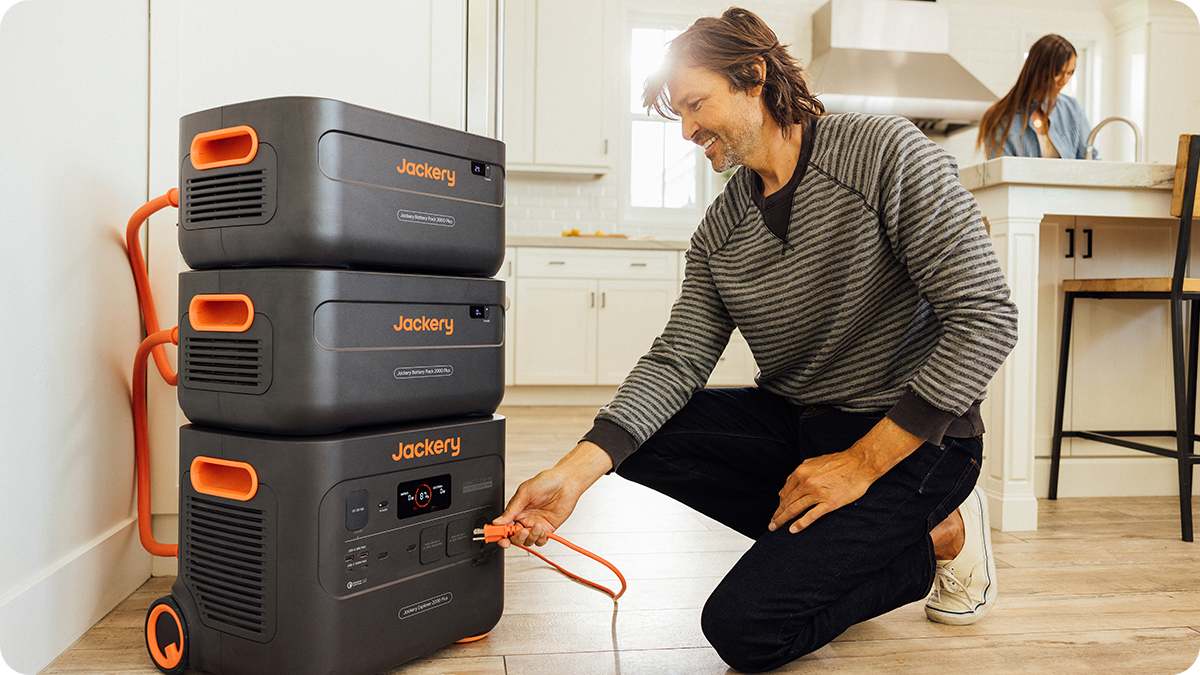The Importance of Reliable Power for Outdoor Work
The Role of Consistent Power in Outdoor Jobs
Consistent power is needed by many outdoor professions for workflows and productivity. In construction, power operates circular saws, electric screwdriver, and concrete saw. All require stable electricity to function. Field researchers use power for spectrometers, soil analyzers, and environmental monitoring devices. Data collection can halt without a reliable power source for time-sensitive losses when environmental conditions are ideal for specific studies.
Outdoor photographers and videographers utilize portable lighting, drones, and high-capacity battery chargers for continuity in remote areas. When power fails, productivity suffers. Sensitive equipment can also be damaged due to improper shutdowns. Off-grid power stations are solutions when grid connectivity is absent in rugged terrains or transient job sites. They provide consistent energy outputs based on demanding tools. They may have AC, DC, and USB output. They enable the operation of equipment, cut idle time, and soften risks of power fluctuations.
Examples of Power-Dependent Tools and Equipment in Outdoor Settings
Outdoor work may include power-intensive equipment for reliability. In construction, jackhammers, welding machines, and laser levels demand stable power for performance. Field researchers deploy GPS units, drone-mounted LIDAR systems, and thermal imaging cameras for mapping and analysis. They need consistent power and fast recharge cycles to keep pace with field schedules. Photographers working in natural landscapes employ portable power for high-wattage LED lights, motorized gimbals, and professional-grade printers for on-site proofs.
Here, an off-grid power station is invaluable. It offers flexible and reliable power outputs that can adapt to equipment with erratic energy requirements. Such stations might have high-capacity lithium-ion batteries, inverter systems with pure sine wave technology, and charging capabilities that handle multiple devices. With less dependency on conventional generators (noisy, fuel-intensive, and less environmentally friendly), off-grid power stations guarantee that professionals can concentrate on their tasks without worrying about energy or environmental disruptions.
Key Benefits of an Off-Grid Power Station
Portability
An off-grid power station for outdoor workers must be portable. It should combine lightweight construction with materials to withstand challenging conditions. Lithium-ion battery technology is the core of such devices, which lowers weight and offers high energy density. For example, a 1 kWh LiFePO4 battery can weigh as little as 10.8 kg compared to its counterparts, which are bulkier and heavier. Foldable solar panels with modular designs improve transportability. Off-grid power stations might include ergonomic handles, detachable components, and IP-rated enclosures to safeguard against dust and water. It renders deployment in alpine construction sites, remote surveying locations, or disaster recovery zones feasible and efficient. Some models even integrate wheeled systems or attachable frames for easier movement across rugged terrain.
Eco-Friendliness
The eco-friendly aspect of an off-grid power station is thanks to its photovoltaic solar panels or even small-scale wind turbines. It disregards fossil fuels and decreases the carbon footprint of lengthy outdoor operations. MPPT controllers optimize solar energy harvesting during partial shading or overcast conditions for efficiency. For instance, a 500 W portable panel with an MPPT-equipped solar power station may generate up to 2.5 kWh daily for electric drills or GPS systems. Moreover, renewable energy avoids the noise and air pollution of diesel generators for wildlife preserves or archaeological sites. Such stations keep power availability without losing sustainability while capturing and storing surplus energy during peak sunlight hours.
Versatility
Off-grid power stations attain versatility through AC outlets, USB-C PD ports, 12V DC outputs, and sometimes even specialized connectors. It integrates with laptops, drones, welding machines, or water pumps. For instance, a 2 kW power station with a pure sine wave inverter can support medical diagnostic devices or precision measurement instruments without electrical noise. Furthermore, adjusting the voltage and current settings gives compatibility with equipment and disregards external adapters. Some models may have modular expansions, so users can daisy-chain additional batteries or attach external controllers for higher load capacities. Such features provide working flexibility for professions with multi-device usage in active environments.
Long-Lasting Power
Reliability in long outdoor scenarios must be offered by a practical off-grid power station. Lithium-iron phosphate batteries are used for their high cycle life. They can provide up to 4,000 cycles at 70% depth of discharge. It gives consistent performance during projects lasting weeks or months. Besides, BMS safeguards against overcharging, overheating, and deep discharge for operational safety and battery life. Some models may support parallel or series configurations to scale energy capacity. It helps power field offices or water purification systems in remote regions. Additionally, hybrid input options, including combining solar and grid charging, give rapid recharging when conditions permit.

Why Choose Off-Grid Power Station Over Traditional Generator?
Noise Levels
When evaluating off-grid power stations versus fuel-based generators, noise levels are critical for European outdoor workers. Unlike conventional generators, off-grid power stations operate almost silently due to the absence of IC engines, which may produce sound levels above 70 decibels at close range. It can be disruptive in areas where regulatory noise limits apply, including construction sites near residential zones or protected natural areas. That’s where compliance with EU noise pollution directives is mandatory. Also, long exposure to generator noise can prompt worker fatigue and hearing strain, impacting productivity and safety.
Off-grid power stations use solid-state components and inverters, which generate negligible acoustic disturbances. For instance, a lithium-ion-based off-grid system with a high-efficiency MPPT controller is practically inaudible under heavy loads. It suits when maintaining a low auditory profile is indispensable, including surveying wildlife habitats or conducting repairs in quiet rural settings. So, the silent operation of an off-grid power station cuts environmental noise and creates a more engrossed and less stressful work environment for outdoor crews.
Maintenance Requirements
Maintenance is another area where off-grid power stations beat traditional generators. Generators use internal combustion engines, which demand regular oil changes, air filter replacements, and fuel system checks. In contrast, off-grid power stations have slight maintenance needs owing to LiFePO4 batteries. They are durable and offer up to 5,000 charge cycles with no degradation in performance. In real terms, this means years of reliable energy output without routine upkeep.
Most off-grid power stations integrate self-diagnostic systems. They monitor real-time battery health, input/output efficiency, and fault conditions. It precludes manual inspections and implies fewer disruptions, lower active costs, and fewer maintenance personnel for outdoor workers. A diesel generator might need biannual servicing and carry component failure due to fuel contamination or wear. Yet, an off-grid power station simply demands occasional firmware updates and visual inspections for physical damage. Their durability and simplicity suit remote sites when logistical challenges can render old maintenance routines impractical.
Environmental Impact
The environmental impact of energy solutions is a consideration in Europe because emissions regulations and sustainability goals shape industry practices. Traditional generators emit CO2, NOx, and PM for air pollution and climate change. Even the most “efficient” fuel-based models cannot escape environmental costs. In contrast, off-grid power stations operate without emissions. They employ solar and wind or stored energy in clean battery systems. Adopting off-grid solutions supports conservation principles and avoids legal complications of emissions for outdoor workers in ecologically sensitive national parks or protected forest zones.
A hybrid off-grid power station with solar panels and high-capacity batteries can sustain operations without fossil fuel inputs for weeks. It complies with European green energy standards and preserves natural surroundings. The life of an off-grid power station is less damaging. Recyclable battery parts and non-toxic materials cause a lower environmental footprint than the disposal challenges of generator oil and fuel residues. With off-grid power stations, outdoor teams meet their energy needs and support a move toward a cleaner future.
Recommended Choice: Jackery Solar Generator 1000 v2
Jackery Solar Generator 1000 v2 is a forward-looking off-grid power station designed for European outdoor working professionals to rely on portable energy. Featuring a compact size weighing just 23.8 pounds and an 18% reduction in size over its predecessor, it is powerful enough for a 1070Wh capacity and 1500W output yet light enough to transport easily. It’s built with a durable LiFePO4 battery to protect 70% capacity holding up to 4000 charge cycles after 10 years. Apart from that, it supports seamless operation for essential tools—an 1160W microwave for 0.8 hours, a 230W heated throw for 6 hours, or a 500W ice maker for 1.8 hours.
With Jackery SolarSaga 200W Solar Panels, efficient recharging can be accomplished in remote locations by simply placing the charger in the sun and getting a full solar recharge in just 7.5 hours. Our Emergency Super Charging mode has an app-enabled system that recharges the off-grid generator as fast as one hour for emergencies. The integrated UPS keeps equipment safe from less than 20ms switchover time. ChargeShield2.0 technology is reinforced with 62 protective mechanisms to reinforce safety. The IEC 60068-certified casing can endure harsh settings. This solution provides the same official precision, scalability, and superior energy resilience needed to power drones, laptops, phones, and more.

Tips for Maximizing Efficiency with an Off-Grid Power Station
Proper Storage and Maintenance
Storing an off-grid power station key to assure its permanency. Keep it in a dry, temperature-controlled environment when not used. Extreme heat or cold can degrade lithium-ion batteries over time. To avoid thermal stress, uphold the unit between 15°C and 35°C. For long-term storage, charge the battery 40-50%. It lowers chemical strain than a full charge or complete depletion. Inspect the unit for dust or moisture ingress if it has vent openings.
Use a silica gel pack nearby to absorb humidity during long storage. Clean all ports and terminals using compressed air to avert oxidation. If your off-grid power station supports firmware updates, confirm that they are performed sporadically to optimize battery management systems and efficiency. While in storage, recharge the station every few months to counter self-discharge. It thwarts over-discharge and keeps the battery’s cycle life.
Optimal Charging Techniques Using Solar Panels
When charging your off-grid power station with solar panels, prioritize panel placement for efficiency. Verify that the panels are angled correctly (30-35 degrees for most of Europe), depending on the season. Use an MPPT controller if your power station supports it. It exploits power extraction under capricious sunlight conditions for better charging efficiency than PWM controllers. Match the solar panel’s voltage and wattage output to the station’s input limits.
Overloading the input can trigger protective mechanisms and cut charging performance. Monitor real-time charging data via companion apps or station displays to avoid energy loss during peak sunlight hours. Plus, clean the solar panels. Dust and debris can decrease energy absorption. Portable solar panels with bifacial technology can be used for higher efficiency. They can capture diffuse light from both sides to extend charging capability on cloudy days in Europe.
Pairing with Energy-Efficient Devices to Extend Usage Time
Device pairing protracts the usability of an off-grid power station. Choose energy-efficient products like LED lighting and high-efficiency refrigerators. For instance, a 10W LED light may last longer than an incandescent bulb. Check the inverter efficiency of the power station. Lower-efficiency inverters can waste energy during AC-to-DC conversion.
Utilize DC outputs whenever possible. Bypassing the inverter lowers energy loss. For charging electronics, use PD USB-C ports. They are more efficient for devices than standard USB-A. Time your usage to support solar recharging cycles. E.g., high-drain devices can be charged during peak sunlight hours to inhibit deep discharges at night. Finally, invest in smart power strips with monitoring features. They let you identify and eliminate “phantom loads” consuming power in standby mode. It confirms that every watt from your off-grid power station is used.
Conclusion
Off-grid solar power systems provide steady electricity for remote drones, welders, and spectrometers for outdoor workers. They include lithium-ion batteries with up to 5,000 cycles, are quieter, and need less maintenance. Under shifting circumstances, their MPPT controllers enhance solar input efficiency. GPS mapping and field office systems may be powered by off-grid solar kits with modular extensions for eco-friendly operations. So, switching to these systems reduces downtime, streamlines logistics, and easily supports sustainable practices. So, why wait? Come to explore our range of solar generators for outdoor work!








